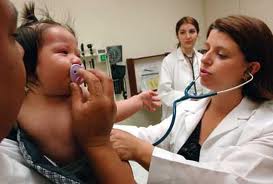More often these days, hospitals are beginning to employ methods beyond hiring interpreters and offering translated paperwork in order to improve care for an increasingly diverse patient population.
In order to grasp a better understanding of their patients, doctors and nurses have begun interviewing religious leaders, visiting cultural centers and even traveling abroad.
“We can’t just say, ‘You’re different,’ call an interpreter and consider our job done,” Candi Castleberry-Singleton, chief diversity officer at the University of Pittsburgh Medical Center, which operates 15 hospitals and clinics throughout Pennsylvania, said. “What we have to say is, whatever cultural beliefs you have, they’re going to be acknowledged and respected.”
As immigrants continue to expand further away from the traditional immigrant hubs of New York, California, and Texas, the increased knowledge will help health care providers all over the nation close not only the linguistic gap with patients but also the cultural gap.
In the small town of Storm Lake, Iowa, with a population of 12,000, the demographic has been transformed by Hispanics drawn to work in meatpacking plants in the area
The chief executive of the local hospital in Storm Lake, Todd Hudspeth, says he realized he had a problem when he started getting complaints about his hospital from Mexican and Central American immigrants at a Spanish Mass he attended a few years ago. There were also no interpreters or Spanish speakers on the staff.
Hudspeth decided to make a trip to Mexico in 2004 with several doctors and nurses to learn about the health care system. The hospital has since created a training program that covers attitudes among people from Mexico and Central America toward issues like birth, illness, dying and death. Some of the doctors have even made repeated trips to Mexico.
“A lot of it is just raising people’s awareness that not everybody does things the way we do in the Midwest,” Hudspeth said.
Health care providers say finding ways to make immigrants feel more at ease is not just a good-faith effort at cultural sensitivity but can also translate into improved health outcomes.
“A good part of the mentality is still to provide what our patients need,” Dr. Jasmin Moshirpur, regional director of the Queens Health Network, said. “Health needs come first, of course, but there’s no question we can be better doctors if we’re also mindful of patients’ cultural needs.”


Recent Comments